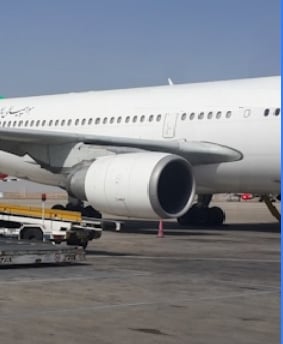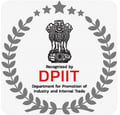Revolutionizing Maintenance, Repair, and Overhaul (MRO) with AI-Powered Tools and Image-Based Repositories
Blog essays the turning point in MRO: Especially in the Indian MRO space, the push for digital transformation in MRO is gaining momentum. With a growing industrial base and increasing demand for efficiency, AI-powered tools are set to play a pivotal role.


Revolutionizing Maintenance, Repair, and Overhaul (MRO) with AI-Powered Tools and Image-Based Repositories
In the rapidly evolving landscape of Maintenance, Repair, and Overhaul (MRO), the integration of artificial intelligence (AI) is not just a trend but a transformative necessity. AI is enabling faster, more efficient, and precise solutions, particularly when combined with advanced imaging technologies like laser profilers, 3D scanners, and thermal imaging tools. This blog delves into the development of AI-driven tools for MRO, emphasizing their impact on time savings, manpower efficiency, and accuracy.
The Need for AI in MRO
MRO processes, critical across industries like aerospace, manufacturing, and energy, have traditionally relied on manual inspections and repairs. This approach, while reliable, is often time-consuming, labor-intensive, and prone to human error.
AI-driven tools are changing the game by leveraging:
Image-Based Repositories: AI can process and analyze vast libraries of images, enabling predictive maintenance and faster issue identification.
Repeatability: AI ensures consistent results in inspections and repairs, reducing variability caused by human factors.
Speed and Precision: Advanced imaging technologies integrated with AI allow for faster and more accurate diagnostics.
AI and Imaging Technologies: A Perfect Match
AI becomes even more powerful when paired with cutting-edge imaging tools. Here's how these technologies are enhancing MRO:
1. Laser Profilers
Laser profilers create detailed surface profiles, essential for detecting wear, cracks, or deformities. When combined with AI, these devices:
Automate Defect Detection: AI algorithms can identify surface anomalies within seconds, reducing inspection time significantly.
Provide Predictive Insights: Analyzing patterns in surface degradation helps in forecasting maintenance needs.
2. 3D Scanners
3D scanning enables precise modeling of components, which is invaluable for MRO applications. Integrated with AI, these scanners:
Enhance Accuracy: AI refines the data from scans, eliminating noise and ensuring high-quality outputs.
Facilitate Reverse Engineering: Creating digital twins of components simplifies repair and replacement processes.
3. Thermal Imaging
Thermal cameras detect heat variations, crucial for identifying electrical faults, leaks, or overheating parts. AI enhances their utility by:
Real-Time Fault Detection: AI-powered analysis highlights anomalies instantly.
Improved Diagnostics: AI can correlate thermal patterns with specific failure modes for targeted interventions.
Building AI-Driven MRO Tools
Developing tools for AI-backed MRO requires a multi-faceted approach:
1. Creating Robust Image Repositories
Building a comprehensive image database is foundational. This involves:
Data Collection: Aggregating images from diverse MRO scenarios using laser profilers, 3D scanners, and thermal cameras.
Annotation and Labeling: Ensuring each image is accurately labeled to train AI models effectively.
Data Augmentation: Enhancing datasets through synthetic image generation to cover edge cases.
2. Designing AI Algorithms
Custom algorithms tailored to MRO tasks are essential for success. Key considerations include:
Feature Extraction: Algorithms must focus on critical features like cracks, thermal hotspots, or geometric distortions.
Real-Time Processing: Ensuring AI can process data instantly for on-site applications.
Adaptability: AI models should evolve based on new data and changing requirements.
3. Hardware Integration
AI-powered software needs compatible hardware for optimal performance. This includes:
High-Resolution Sensors: For capturing detailed images across modalities.
Edge Computing Devices: To enable real-time analysis without relying on cloud connectivity.
Benefits of AI in MRO
1. Time Savings
AI reduces the time required for inspections and repairs by automating processes and delivering real-time insights. This is especially critical in industries where downtime translates to significant losses.
2. Manpower Efficiency
AI tools free up human resources for more strategic tasks, reducing the dependency on specialized personnel and minimizing human error.
3. Enhanced Accuracy
AI's analytical capabilities surpass human limitations, ensuring precise defect detection and consistent results.
The Indian Context
In India, the push for digital transformation in MRO is gaining momentum. With a growing industrial base and increasing demand for efficiency, AI-powered tools are set to play a pivotal role. Companies leveraging AI in MRO can:
Reduce Costs: Addressing budget constraints through automation and predictive maintenance.
Improve Safety: Ensuring compliance with stringent safety standards.
Boost Competitiveness: Enhancing service quality to compete globally.
Challenges and Future Directions
While AI-powered MRO holds immense promise, challenges remain:
Data Security: Ensuring sensitive data is protected in AI-driven ecosystems.
Integration Complexities: Seamlessly combining AI tools with existing workflows.
Skill Gaps: Training personnel to work with advanced technologies.
The future of MRO lies in overcoming these hurdles and embracing innovations like machine learning, augmented reality, and IoT.
Conclusion
AI-powered tools are revolutionizing MRO, offering unprecedented speed, efficiency, and accuracy. By integrating advanced imaging technologies like laser profilers, 3D scanners, and thermal cameras, MRO processes are becoming smarter and more reliable.
For Indian industries, adopting these solutions represents a significant leap forward, ensuring global competitiveness and operational excellence. The time is ripe to invest in AI-driven MRO solutions and redefine how maintenance, repair, and overhaul are conducted.





